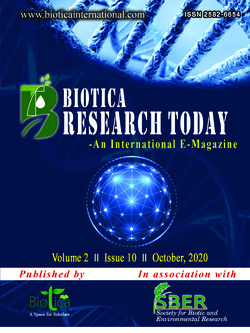
Composting of Mango Wastes
Murugaragavan Ramasamy*
Dept. of Soils and Environment, Agricultural College and Research Institute, Tamil Nadu Agricultural University, Madurai, Tamil Nadu (625 104), India
R. Shanmugasundaram
Dept. of Soils and Environment, Agricultural College and Research Institute, Tamil Nadu Agricultural University, Madurai, Tamil Nadu (625 104), India
Rakesh Subramanian Srirangarayan
Dept. of Environmental Sciences, Agricultural College and Research Institute, Tamil Nadu Agricultural University, Coimbatore, Tamil Nadu (641 003), India
Ramesh P. T.
Dept. of Soil Science and Agricultural Chemistry, Agricultural College and Research Institute, Tamil Nadu Agricultural University, Killikulam, Tamil Nadu (628 252), India
S. R. Shrirangasami
Rice Research Station, Tamil Nadu Agricultural University, Ambasamudram, Tamil Nadu (627 401), India
Prasanthrajan M.
Dept. of Silviculture and Natural Resource Management, Forest College and Research Institute, Tamil Nadu Agricultural University, Mettupalayam, Tamil Nadu (641 301), India
Saravanakumar S.
National Institute of Rural Development and Panchayat Raj, Hyderabad, Telangana (500 030), India
DOI: NIL
Keywords: Carotenoids, Cowdung, Mango peels, Polyphenols
Abstract
India is world’s largest produced or mango (approximately 21 million tonnes). During the processing of mango, voluminous of solid and liquid wastes are generated. Mangoes are called the “King of Fruits" for its taste, nutrients and uses. The solid waste comprised of mango peel, stones, stalk, trimmings and fibrous materials constitute about 40-50 percent of total fruits waste of which 12-15 percent is peel, 5-10 percent is pulper waste and 15-20 percent is kernel. Significant quantities of mango peel are to be composted in a hot composting system is recommended by using fresh cow dung (3:1 ratio; 3 parts mango peel or waste : one part water) and 2.5% Urea dissolved in water. The compost heap is turned once in a week and should maintain 50% moisture. The manurial value of mango waste compost shows around 1.5% Nitrogen, 0.40% Phosphorus and 1.4% Potassium.
Downloads
not found
Reference
Jahurul, M. H. A., Zaidul, I. S. M., Ghafoor, K., Al-Juhaimi, F. Y., Nyam, K. L., Norulaini, N. A. N., & Omar, A. M. (2015). Mango (Mangifera indica L.) by-products and their valuable components: A review. Food chemistry, 183, 173-180. https://doi.org/10.1016/j.foodchem.2015.03.046.
Pedroza-islas RI, Aguilar-esperanza E and Vemon-carter EJ. (1994). Obtaining pectin from solid wastes derived from mango processing. AICHE symposium Series, 90(300): 36-41.
Pradeep Puligundla, Vijaya Sarathi Reddy Obulam, Sang Eun Oh and Chulkyoon Mok. (2014). Biotechnological Potentialities and Valorization of Mango Peel Waste: A Review. Sains Malaysiana 43(12)(2014): 1901–1906.
